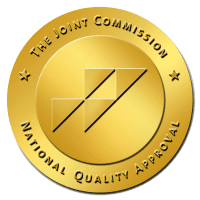Understanding the Odor of a Powerful Opiate Drug
According to the National Institute on Drug Abuse, about 1.1 million Americans age 12 and older have used heroin in the past year.
Heroin is a highly addictive opioid made from morphine, a natural substance derived from the seed pod of opium poppy plants. Its two most common forms include a powder (white or brown) and a sticky substance known as black tar heroin.
If you believe someone you know is abusing heroin, it’s important to know the signs. In addition to monitoring changes in their appearance and behavior, you may also notice a new odor.
What does heroin smell like? The answer is a little more nuanced than you might expect. Today, we’re sharing the details you need to know.
A Look at Heroin Addiction in the U.S.
The U.S. has seen an alarming increase in the rate of heroin addictions over the past few years. This drug has a very high potential for addiction and can cause long-term changes to a person’s physical and mental health. Overdoses can be fatal.
People who use heroin regularly often develop a tolerance to the substance. This means that they require higher and/or more frequent doses of the drug to achieve the same euphoric high they once felt when taking it.
How Heroin Acts in the Body and Brain
When someone ingests heroin, it quickly enters their brain and attaches to their body’s opioid receptors. This induces a strong feeling of euphoria, which is only temporary and typically leads to the opposite effect soon thereafter. Keeping the cycle going encourages many people to transition from casual users into heroin addicts, especially as their bodies become more tolerant to the drug.
Not only does heroin damage the lungs, kidneys, liver, and brain, but this drug abuse also increases the risk of other health conditions, such as:
- Infections
- Heart attacks
- Deat
According to the latest data from NIDA, overdose deaths involving heroin reached 9,173 in 2021. The widespread availability of this drug is one of the factors affecting this rate. As high-purity heroin becomes more readily available on the black market, it’s easier for users to become addicted to it.
Heroin addictions can be treated in a number of ways, including medicines and behavioral therapies.
It’s important to approach this process under the careful guidance of a trained medical professional. Withdrawing suddenly can lead to adverse effects including stomach aches, muscle pains, and respiratory distress, among other symptoms. An effective drug detox for heroin can help addicts carefully and safely transition away from this substance and the hold it has over their body and mind.
What Does Heroin Smell Like?

Some substances, such as marijuana or cigarettes, have a trademark scent that makes them universally detectable. If we were to assign a characteristic odor to heroin, it would be strong and pungent, in many cases with a vinegar tang. In addition, some people also thing it can smell slightly sweet.
However, that definition is broad, and here’s why: The specific smell of heroin can change depending on a few different factors. These include:
- The purity of the substance
- The process used to make it
- Any other drugs it’s taken or mixed with
On its own, pure heroin is odorless. Yet, the additives used during the cutting process often create specific odors. The different types of heroin sold on the street contain various chemicals used in processing, and each can alter the scent of the final product.
If you’re trying to determine if a friend or family member is abusing heroin, you might smell the substance on their clothes or body. Knowing this, they might go to great lengths to mask the smell, using cologne or perfume to cover it up. Some of the items you might find that hold the scent of heroin include:
- A dirty spoon
- Cigarette butts
- Dried-up dollar bills
- Worn clothing
- In someone’s car
Most of the time, this substance doesn’t give off a smell when smoked. If you do smell heroin when it’s being smoked, this is usually because there are materials being burned, or there are impurities in the substance. In either case, heroin is easier to detect if you know what to check for.
Let’s explore a few of the notes you might find.
Acidity
To most people, heroin smells acidic. They compare it to vinegar or ammonia. This type of smell often burns the inside of your nostrils and explains why heroin is often associated with a pungent odor.
Sweet Fruitiness
Interestingly, others believe that heroin smells fruity or sweet in nature. You may also detect a faint aroma of flowers.
The Odors of Different Types of Heroin

One of the reasons why it’s difficult to pinpoint exactly how heroin smells is that it can take on different scents depending on its form. Here’s a quick breakdown of what you might discover with each type.
Black Tar Heroin
Black tar heroin is considered the least pure and least refined of the three types of heroin. This also makes it the least expensive to purchase, which catalyzes the drug addiction epidemic. It gets its name from its dark, stick appearance, which looks like resin.
This form of heroin is most closely associated with the aforementioned vinegar smell, which can be very strong. The odor is created when the form is cooked or processed. You may also notice that it smells like burning plastic.
Black tar heroin can take a few different shapes, including:
- A hard rock
- A smear
- A gummy blob
Another factor contributing to its off-putting odor is the additives that often accompany the heroin. This form is typically cut with add-ins that can range from coffee grounds and soil to rat poison. These make the substance very impure and dangerous to consume.
White or Brown Powder Heroin
White powder heroin, or China white heroin, is considered the purest form of this substance. It can also take on a brown hue.
Although it is more pure than black tar heroin, this form of heroin is not entirely pure. It’s usually cut with another substance, which gives it its trademark acidic odor.
In a completely powdered form, heroin doesn’t usually have a strong odor. However, it tends to smell more like vinegar when it gets wet, or when it’s blown into the air.
Liquid Heroin
Liquid heroin isn’t as common as the two types listed above. However, it is available and is often sold as a beverage. In smaller quantities, it may be contained in eyedrop bottles.
This form of heroin doesn’t usually have a telltale smell.
What Are Cutting Agents?
You’ve heard us mention that heroin is often “cut” with various substances. What are those and why are they there?
Put simply, adding cutting agents makes heroin bulkier, which makes it weigh more. By incorporating them, dealers can charge a higher price for their offerings, increasing their profits.
When cutting agents are present, less actual heroin is used. Instead, the product is made more substantial through the use of these cheap fillers. In general, we can break these agents down into three categories:
- Toxic
- Non-toxic
- Pharmaceutical
Each type of agent usually has its own associated smell, which can affect the way the final heroin smells. Let’s take a quick look at how they compare.
Toxic Cutting Agents
The two most common toxic cutting agents are laundry detergent and rat poison. Even when used in small amounts, they can affect the scent of the entire batch.
Non-Toxic Cutting Agents
While non-toxic cutting agents aren’t as dangerous to consume, they can alter the odor of the heroin that they’re mixed into. Some of the most common ones include:
- Cornstarch
- Sugar or sucralose
- Flour
- Powdered milk
Chances are, you may have smelled each of these ingredients before, which can make them a little easier to detect. They’re often used in baking and have a starchy scent. It’s important to note that even non-toxic additives can be extremely dangerous when mixed with heroin, and these cutting agents aren’t necessarily safer than their toxic counterparts.
Pharmaceutical Cutting Agents

Dealers will add pharmaceutical cutting agents to amplify the effects of the heroin they’re selling. These typically fall into one of two categories:
- Stimulants
- Depressants
Both stimulants and depressants can alter the smell of heroin. Stimulants create a more powerful sense of alertness and hyperactivity. Caffeine, cocaine, and methamphetamines are three examples.
On the other hand, depressants induce a more relaxed and calm feeling in the user. Common ones include fentanyl, opioid painkillers, and lidocaine. Fentanyl-laced heroin is especially dangerous. A synthetic opioid that’s up to 50 times stronger than heroin and 100 times stronger than morphine, fentanyl is a primary contributor to both fatal and non-fatal overdoses in the United States.
Get Proven Help For Heroin at Purpose Today
Do you suspect that someone you know or love might be struggling with a heroin addiction? If so, you might be looking for any sign to confirm or deny your suspicion. This might have led you to ask questions such as, “What does heroin smell like?”
As you can see, there isn’t a universal answer. While some people think it smells sweet or fruity, most people agree that it has an acidic or vinegary scent. This odor can also change depending on the type of heroin consumed, and any additives it contains.
At Purpose Healing Center, we provide different types of treatment programs designed to help individuals find support and life after opioid addiction. To learn more about the services we provide, contact us today.



